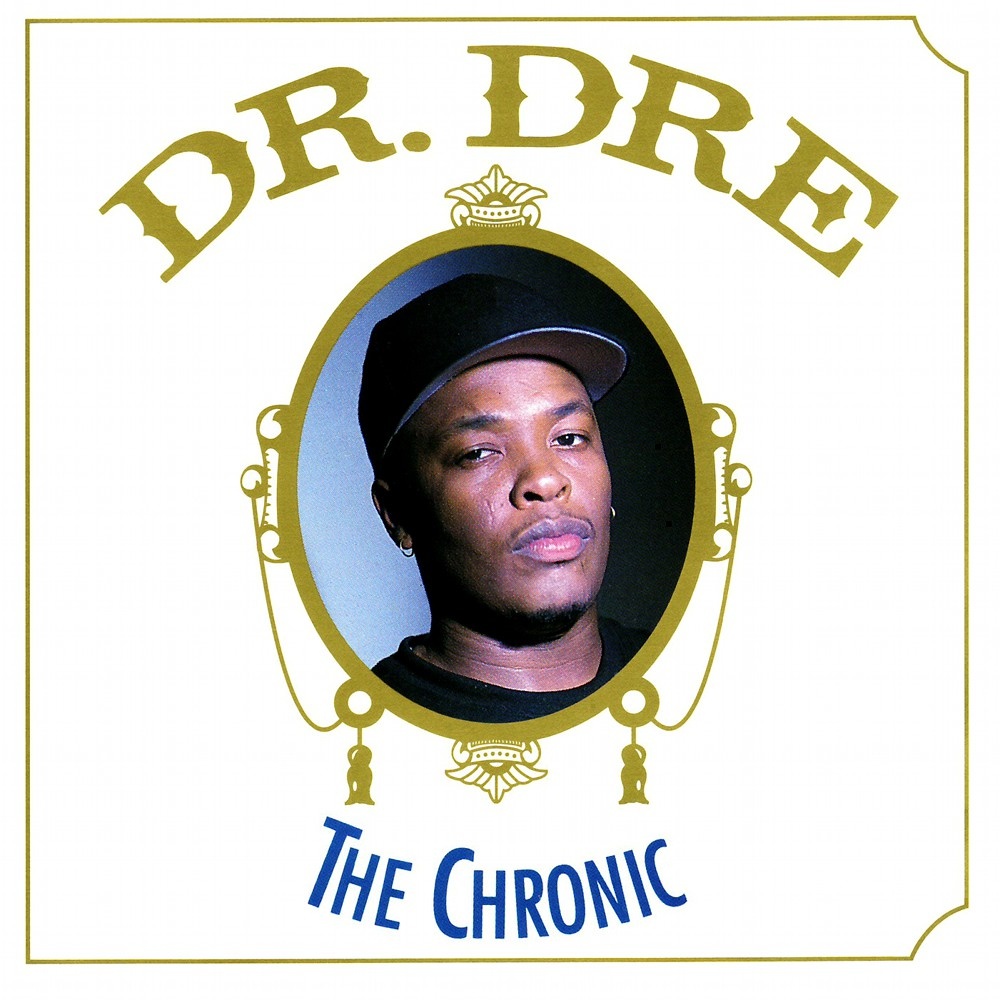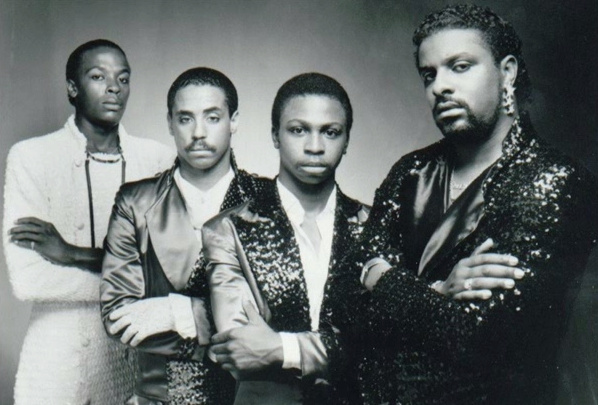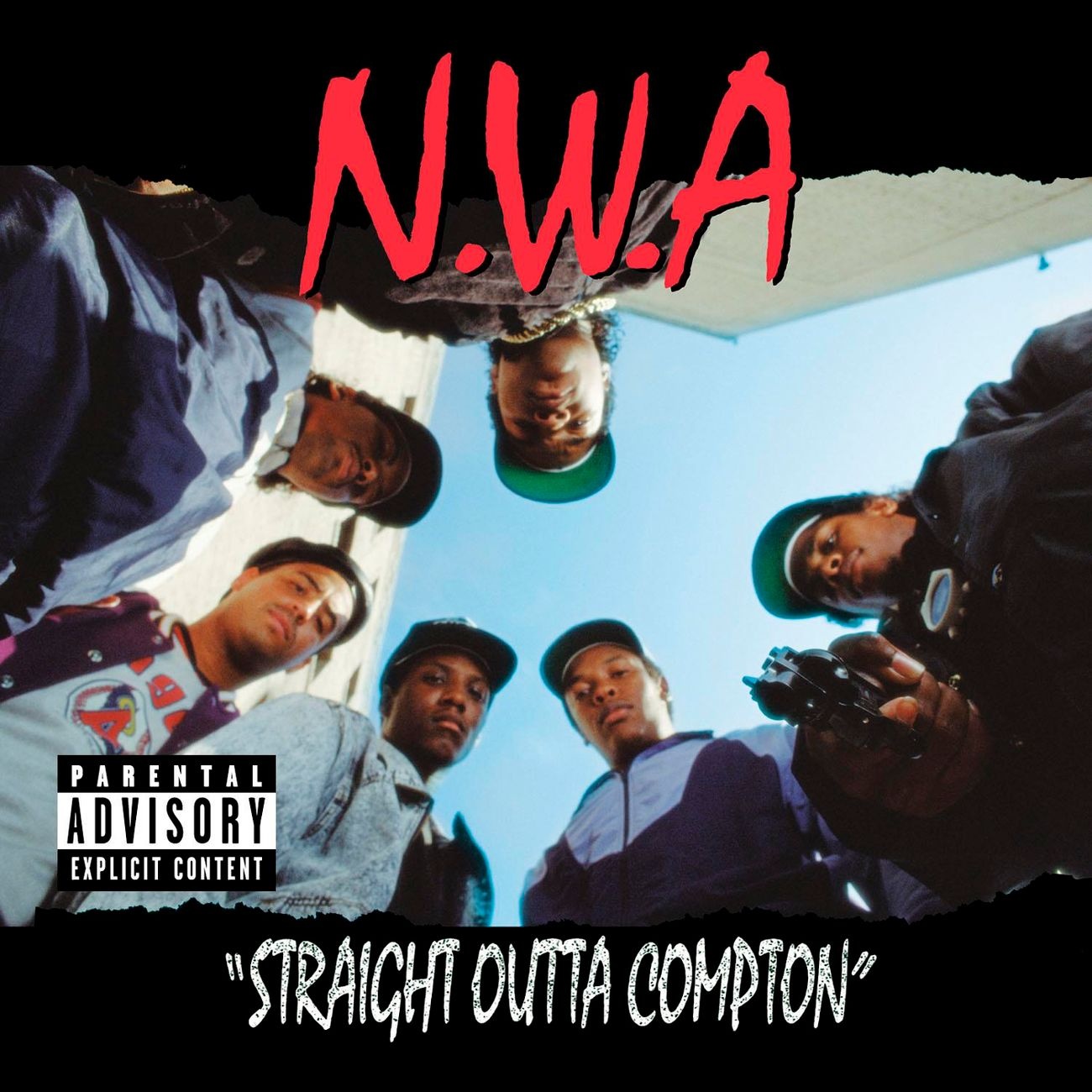Andre Young, known better as Dr Dre, changed hip-hop forever. One of the godfathers of gangsta rap—integral to N.W.A. and the birth of the sound that was to define the West Coast, G-funk—Dre’s not only one of the single most important producers in hip-hop history but also a weighty kingmaker, instrumental in the careers of Snoop, Eminem and 50 Cent, and the rise of his Beats empire.
Dre has not only weathered hip-hop’s many transformations as a solo artist but boasts a formidable production discography that stretches from rap to R&B to expertly scoring films. Even the continued interest in infamously delayed album Detox is testament to the respect Dre is able to command from a career that spans over two decades.
Here we chronicle just some of Dr Dre’s landmark moments that contributed to his evolution.
Andre (far left, I know right!) was christened Dr Dre having earned his stripes DJing at LA club The Eve After Dark, where he labelled himself a “Master of Mixology”. Inspired by the overarching influence of Grandmaster Flash, the World Class Wreckin’ Cru fleetingly became stars of the early 80s electro-hop in the West Coast, the track “Surgery” acting almost as an ode to Dre on the decks, selling 50, 000 copies in his hometown Compton. Though the group experienced mild success, Dre saw an out from the constraints of DJing after meeting a rapper by the name of O’Shea “Ice Cube” Jackson.
The trio formed the core of Niggaz With Attitude and were later joined by Arabian Prince, DJ Yella, and MC Ren. The rough and ready Dre production of their debut studio album, Straight Outta Compton, enraged the authorities, shocked the music press, and enthralled hip-hop fans with its trifecta of profanity-filled anti-authority tracks “Straight Outta Compton”, “Fuck Tha Police” and “Gangsta Gangsta”. Despite its own notoriety keeping it out of mainstream media—boosted by the FBI sending them a warning letter challenging the lyrical content “Fuck Tha Police”— the album was an unprecedented success, selling over 500,000 copies in just under two months with no radio play or TV support.
Although N.W.A.’s album was simultaneously demonized for glamourising black-on-black crime and praised by fans and critics for portraying the West Coast’s gang culture with unrelenting honesty, violence wasn’t its only focus. Amongst the ferocious energy of the LP was “Express Yourself,” on which Dre took the lead with both production and lyrics, sampling Charles Wright & the Watts 103rd Street Rhythm Band’s song of the same name, and preached the importance of freedom of speech and, notably, contained zero expletives.
By 1990, Cube had-not-so-amicably left the group, and though N.W.A continued making music, the critical buzz had worn off. In 1991, N.W.A. made history again, steering second effort EFIL4ZAGGIN to number one despite being banned in a number of retail chains, but Dre’s dwindling interest in N.W.A on top of a strained relationship with Eazy saw him part ways shortly after.
DEATH ROW RECORDS AND SNOOP DOGG

Dre parted ways with N.W.A and Ruthless to co-found Death Row Records with Marion “Suge” Knight, encouraged by rapper The D.O.C. In 1992, Death Row released its first single, Dre’s “Deep Cover”, the theme of a movie of the same name. Dre was joined on the track by a rapper who had come highly recommended by step brother Warren G who, alongside G and Nate Dogg, comprised the fellow Compton group, 213. The recommended rapper was called Snoop Doggy Dogg.
Though all of 213 were to prove prominent in Dre’s rise, it was Snoop that would play a big part in the debut album that cemented his career. 1993’s The Chronic saw Snoop appearing on nine of the album’s cuts, his trademark laissez-faire style punctuating Dre’s encyclopaedic grasp of funk samples to devastating effect, not least on breakout single “Nuthin’ But a ‘G’ Thang” which famously sampled Leon Haywood’s smooth “I Wanna Do Something Freaky To You”.
The Chronic went above and beyond expectations, going triple platinum and earning Dre his first Grammy for Best Rap Solo Performance on track “Let Me Ride”. Speaking with VIBE magazine, Dre recalled: “Before I got with Interscope, I recorded the entire album, artwork and everything and went into almost every label, and everybody was slamming doors on me, talking about, “This isn’t hip-hop; you’re using live instruments.” It had me second-guessing myself. I remember being on my balcony with Nate Dogg, listening to my record like, ‘Is this shit good or not?”
Later that year, Snoop went on to release his solo debut, DoggyStyle, with Dre driving production. Coasting on the runaway success of The Chronic, DoggyStyle followed suit ,shifting over 4 million copies, charting at number one and birthing Dre-produced classics “Who Am I? (What’s My Name)” and “Gin and Juice”.
Dre’s ascent would continue as he acted as head producer of Death Row, reconciling differences with Ice Cube to produce “Natural Born Killaz”, gaining a number one with signee Tupac Shakur on “California Love” (which was originally intended to be a solo Dre track), as well as producing the soundtracks for films Murder Was the Case, Above the Rim and the lead song from Friday: “Keep Their Heads Ringing”
By this time, though, relations had started to sour with both Death Row co-founder Suge Knight and its new star Tupac Shakur, and cohort Snoop was embroiled in a murder trial. Dre removed himself from the fray, as rising tensions with East Coast rivals Bad Boy Records had begun to overshadow the music and Knight’s dubious approach to management began to plunge the label into disrepute.
In 1996, Shakur’s murder marked a mass exodus of artists from the label, and the end of Death Row Records. By then, Dre had already negotiated his release from Death Row to form his Interscope imprint, Aftermath.
EARLY DAYS OF AFTERMATH
The Dr. Dre Presents the Aftermath album, a compilation LP, was released in November 1996 and featured songs by Dr Dre himself as well as a clutch of newly-signed Aftermath Entertainment artists. The album got an underwhelming reception, but the somber stand-out track “Been There, Done That” marked a more reflective Dre and clear departure from gangsta rap.
Dre continued to build the label, recruiting producer Mel-Man, former En Vogue singer Dawn Robinson, and Eve—then known as Eve of Destruction. Dre had also taken his new lease of life at Aftermath to work with New Yorker Nas on “Nas is Coming.” It was this unexpected union of East and West that would lead to label project The Firm alongside rising rapper Foxy Brown. Dre’s astute production on tracks like “Phone Tap” was praised, but like Dr. Dre Presents: The Aftermath, the project fell short of expectations.
Aftermath’s disappointing commercial performance made for an uncertain future, but in 1998 Interscope’s Jimmy Lovine passed on the tape of a young rapper from Detroit named Eminem, a move which was to totally revive Dre’s career.
INTRODUCING THE WORLD TO EMINEM
Once introduced, Dr Dre and Eminem began work together almost immediately, with Dre pouring all his efforts into Eminem’s major label debut. In 1999 The Slim Shady LP was released to a flurry of both controversy and critical acclaim, bolstered by Dre-produced lead single “My Name Is”. A stripped-back departure from Dre’s previous production, the bare bones of a beat showcased Eminem’s biting delivery, helping it become one of the most astounding debuts in hip-hop history.
Speaking to XXL on his relationship with Em, Dre said: “I feel like, if I hadn’t met Em or we hadn’t linked up, he would eventually have become a success anyway. Because he’s so talented. I was just fortunate enough to meet him first and open the door for him. As far as the race thing goes, when I heard Em for the first time, I didn’t even know he was white. I just knew I wanted to work with him. And that kind of made it better for me…as a creator and innovator, nothing can beat that.”
DRE’S COMEBACK
Buoyed by the success of Eminem, Dre released his second solo album, entitled 2001, at the tail-end of 1999. Not only did 2001 mark a braggadocious return to G-funk and a nod to The Chronic, but it also saw Dre back with the likes of Hittman, Kurupt, Snoop and Nate Dogg as well as recent signees Em and Xzibit. The luxuriously produced lead single “Still D.R.E” was a signifier of Aftermath’s changing fortunes, boasting writing credits from Jay Z and Scott Storch, as Dre combined an almost preternatural talent for menacing strings with a revival of an N.W.A. style appetite for brash lyricism. G-Funk was back.
“Next Episode”, which sampled David McCallum’s 1967 track “The Edge”, and “Forgot About Dre” were to follow with similar chart success, topped off with Dre later scooping a Grammy for Producer of the Year and embarking on the much lauded Up in Smoke Tour.
THE MARSHALL MATHERS LP AND COURTING THE CHARTS
Keen not to rest on his laurels, Dre took a backseat from the limelight after 2001 to concentrate on production for other artists. Reuniting with Eminem on his follow up album, The Marshall Mathers LP, single “The Real Slim Shady” won yet another Grammy, the LP then the fastest-selling rap album of all time.
Dre’s winning streak continued through the early 00s, signing singer Truth Hurts to Aftermath, as well as raking in a tally of production successes including “Let Me Blow Ya Mind” with a now established Eve, a number one single with Mary J’s “Family Affair”, Busta Rhymes’s “Break Ya Neck” and a helping of the classic Dre sound with “Bad Intentions”, a single for soundtrack to The Wash in which Dre starred.
50 CENT AND DETOX
Before Dre became immersed in what was to become his headphones empire, he played kingmaker one more time with the debut studio album of Queens rapper 50 Cent. Having been introduced by Eminem, Dre’s snaking production for “In Da Club” enticed critics yet again with its “My Name Is” style simplicity, as well as marking Dre’s step away from sampling. Lifted by the success of the single, the eventual Get Rich or Die Tryin’ LP sold over 800,000 copies in its first week.
Though the Beats by Dre empire has proved all-encompassing, Dre hasn’t completely abandoned music making, notably working on Raekwon’s Only Built 4 Cuban Linx… Pt. II in 2009 and forming a close relationship with the West Coast’s new guard, Black Hippy. The big question on the hip-hop world’s lips, however, centers on Dre’s next solo release, Detox. Plans for Detox go back as far as 2001 and have become an annual joke for the music press, as each year passes with no release. In 2008, Snoop claimed Detox was finished but delayed by Dre’s workload on Eminem’s Relapse and 50’s Before I Self Destruct, pushing the release back yet again to 2010. In 2009 Dre, bizarrely, chose to premiere a snippet from Detox in a Dr Pepper commercial, reinforced by Eminem saying at least a dozen songs had been finalised. In April 2010 “Under Pressure”, featuring Jay Z, leaked to a cool reception, then singles “Kush” with Snoop and “I Need a Doctor” with Eminem later in the year were met with a better reaction. “I Need a Doctor” charted at number four in the Billboard 100.
Since then, we’ve had Dre working with Kendrick and Slim the Mobster, but still no release date is set in stone for Detox. So, with the idea of a full Dre return becoming the unicorn of the hip-hop community there is at least some comfort in reflecting on the inimitable body of work of one Andre Young.
Follow Jo on Twitter.
This article originally appreared on Noisey UK.







